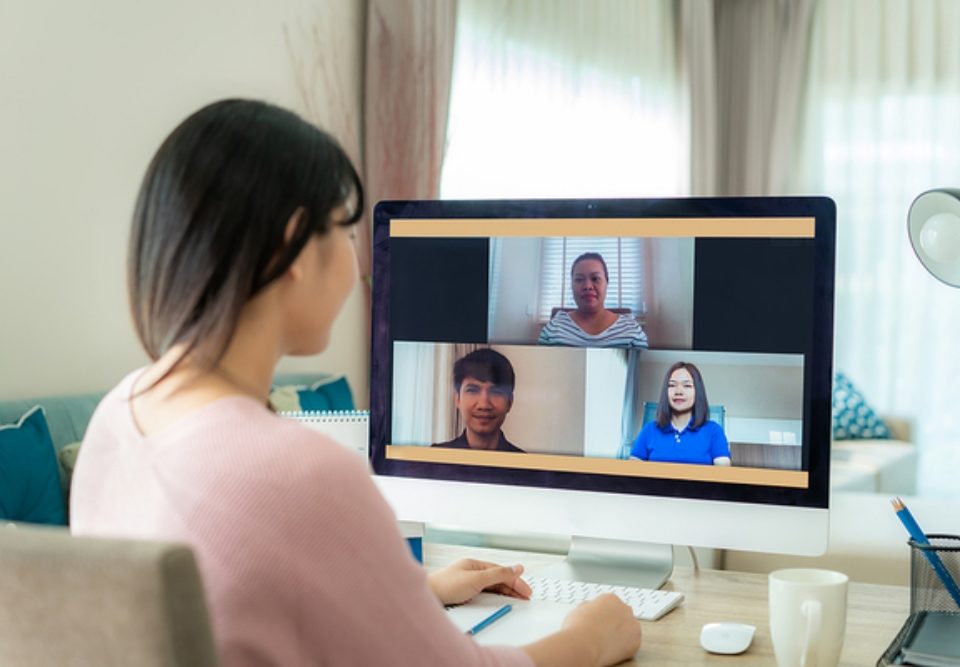
How Do You Manage a Call Center Remotely?
September 11, 2020
Why & How Remote Employees Waste Time
October 6, 2020Common Myths About Computer Tracking Software
A growing number of companies are beginning to use computer tracking software to monitor their employees’ digital activity. This increase in popularity isn’t surprising given the many benefits offered by computer tracking software. Being able to see what employees are doing on their computers can help companies detect security threats, prevent data breaches, and improve productivity.
However, there are still a lot of misconceptions out there that make some companies hesitant to take advantage of this software. Learn the truth behind these common myths about computer tracking software:
Myth #1: Using computer tracking software is an invasion of privacy
There’s a common belief that the use of computer tracking software is an invasion of employees’ privacy. But this software is not designed to invade employees’ privacy. Employers don’t use computer tracking software to collect sensitive data on their employees or engage in unethical practices.
If you plan on using this software, it’s important to talk to your employees about how you came to this decision and how you will protect their privacy while monitoring their activity. Having this conversation will help your employees feel more comfortable with the idea of being monitored at work.
Myth #2: Employees won’t benefit from computer tracking software
There’s no doubt that employers benefit greatly from using computer tracking software. This software can help employers evaluate their employees’ productivity, detect potential security threats, and prevent costly data breaches that could harm the company. But employers aren’t the only ones who benefit from using computer tracking software—employees can benefit, too.
This software will help managers identify the strongest and weakest members of their team. As a result, employees who work hard will finally get the recognition they deserve.
Managers can also analyze the data to identify inefficient business processes that need to be improved upon. By making changes to these processes, managers can make it easier for their team to perform their job duties, which will increase their job satisfaction.
The data can also help managers identify training opportunities for employees. For example, the data may reveal that a few employees spend far more time on a certain task than others. This could indicate that these employees need additional training in that area in order to better perform their job duties. Providing this training could make their jobs far less stressful and frustrating.
The software also collects data that can be used in workplace investigations. For instance, if an employee is falsely accused of harassment, managers can analyze the data collected by this software to determine if the harassment actually occurred. The data could help the employee clear their name and avoid serious consequences.
Finally, employees may be given the opportunity to work more flexible schedules if their employers use computer tracking software. Employers may be more comfortable allowing employees to work remotely knowing that they can keep an eye on what they are doing even when they’re out of the office.
Myth #3: Employers only use computer tracking software to monitor suspicious employees
Some people assume that companies only use computer tracking software to monitor employees who are acting suspiciously, but that’s not the case.
Monitoring software is designed to help companies measure their employees’ productivity, detect insider threats, and prevent data breaches. But employees will not enjoy these benefits of computer tracking software unless they are monitoring all of their employees, not just those that are suspicious.
For example, there is no way to analyze each employee’s productivity if you are only monitoring select employees’ digital activity. Furthermore, it will be nearly impossible to detect insider threats that could lead to massive data breaches if you aren’t monitoring every employee who is connected to your network.
For these reasons, using computer tracking software to monitor select employees is simply not effective.
Myth #4: It is illegal to use employee monitoring software
There are no federal laws that prohibit employers from monitoring their employees’ digital activity on company-owned devices.
In general, it is legal for an employer to monitor activity on company-owned devices that are connected to the employer’s network. However, the laws regarding employee monitoring vary from state-to-state.
Some states impose certain restrictions on the use of employee monitoring software that employers must comply with to avoid legal penalties. For example, the states of Connecticut and Delaware require employers to notify their employees that monitoring will take place. If an employer fails to give advance notice, they are not allowed to monitor their employees’ digital activity.
If you want to install this software, it’s important to learn about the laws in your state so you know what steps you must take to avoid legal consequences.
Myth #5: Employers can’t use monitoring software to track remote employees’ digital activity
Some people are under the impression that computer tracking software can only be used to monitor the digital activity of on-site employees. However, this is not true. Tracking software can be used to monitor the digital activity of all employees regardless of whether they are working on-site or remotely.
In fact, many employers invest in this software solely because they want to ensure their remote workers are staying on task.
Remote workers are faced with a number of distractions at home and must be trusted to perform their job duties with no in-person supervision. This can be challenging, especially for employees who are working remotely for the first time due to the coronavirus pandemic. As employees adjust to remote work, their employers can monitor their digital activity to ensure their productivity has not been affected by the change in location.
Myth #6: Employees can “trick” monitoring software
Employees that know they are being monitored often think they can “trick” the software into thinking they’re working simply by opening a work-related application or program. These employees believe that as long as the work-related application or program is open on their device, the software will report that they are being productive. But that’s not the case.
It’s true that the software will gather data on what applications and programs are being used and for how long. But other data is also gathered, including screenshots, so employers can see exactly what their employees are looking at on their devices. Even if an employee has a work-related application or program open, the screenshots will show their employer what they are actually doing on their device.
Now that you know the truth behind these common myths, you should understand why so many companies rely on computer monitoring software to protect their business. If you’re ready to experience the many benefits of monitoring software, install InterGuard tracking software on your employees’ devices.
Learn more about InterGuard by watching a demo video, taking an online test drive, or starting a free software trial today.



